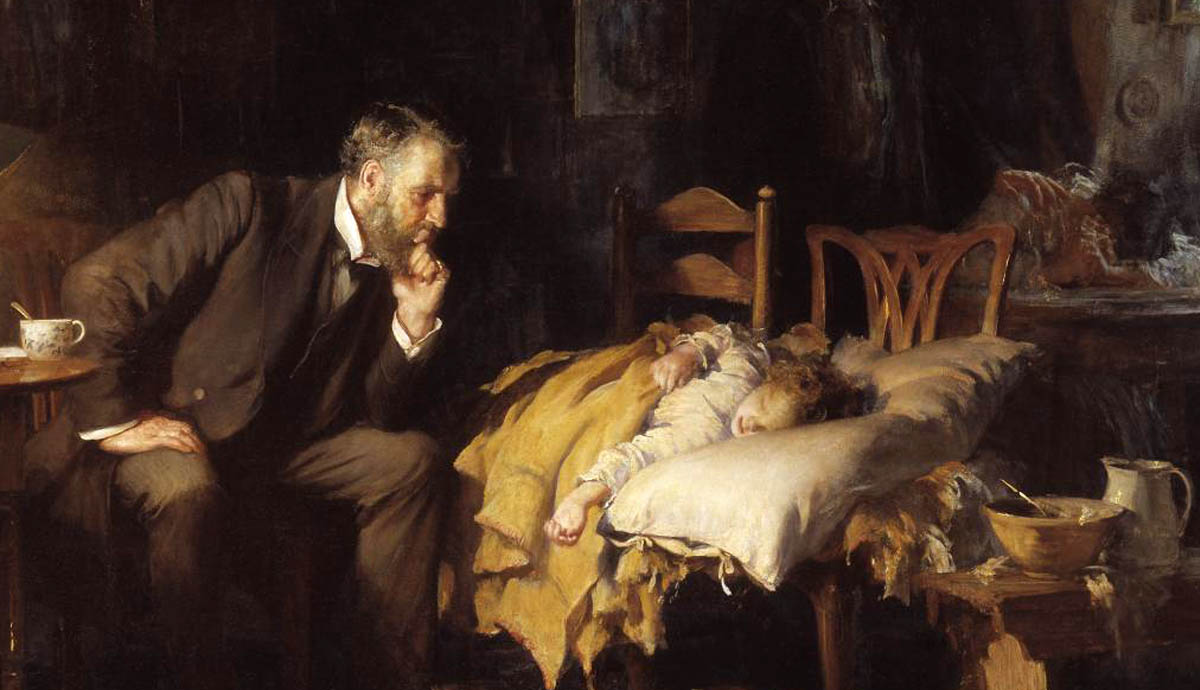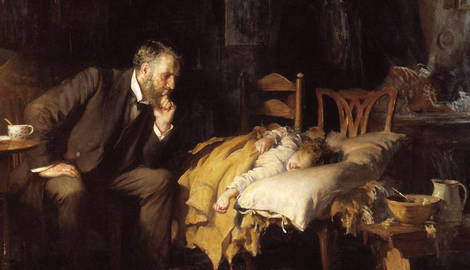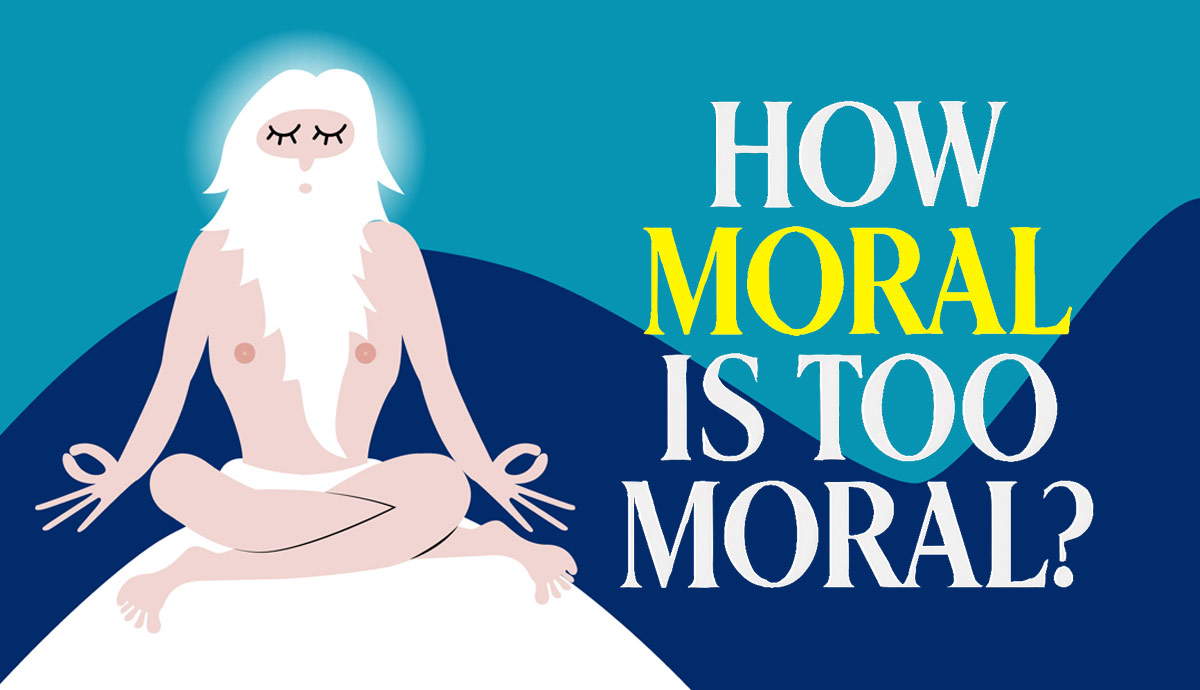
Kantian ethics is one of the most influential moral theories in the history of philosophy. Two fundamental concepts – autonomy and dignity – emerge in an intertwined relationship in Kant’s moral theory. These two concepts are also frequently highlighted in debates about the morality of euthanasia. A careful examination of Kant’s philosophy leads us to an intriguing discussion about the moral permissibility of euthanasia.
Kantian Ethics: A Deontological Theory of Right Conduct

With its systematic approach and solid argument structure, Immanuel Kant’s (1724 – 1804) moral philosophy is extremely thought-provoking. Three major works outline the famous German philosopher’s ethical thought: Groundwork of the Metaphysics of Morals, Critique of Practical Reason, and The Metaphysics of Morals.
A leading notion in Kantian ethics is that moral principles can only be derived from reason. Kant argued that moral obligation was rooted in the rationality of human beings. Reason, as one’s capacity for deliberation and free choice, is what enables individuals to act morally. The duty not to lie thus applies to all rational agents, not just to a particular individual for achieving a particular goal. If reason leads us to a principle of moral action, then, it is our duty to follow it. Hence Kant’s moral theory falls within the domain of deontology; a normative theory of duties. That’s why principles of human action are called imperatives in Kantian terminology: because they constitute commands addressed to individuals.
The two types of imperatives discussed in Kant’s moral philosophy, the categorical imperative and hypothetical imperatives, are in contrast. The unconditional and universal nature of moral requirements makes them categorical. For Kant, a moral principle must categorically hold for everyone. The defining aspect of the categorical imperative is that it is based on universal principles, while the demands of hypothetical imperatives depend on one’s desires. For example, one ought to take Logic 101 course to succeed in analytical philosophy. This is a non-moral requirement based on an individual’s personal goals, therefore not universalizable. The duty to take care of a sick human being, on the other hand, holds universally valid because it is not dependent on one’s own ends.
But what exactly is the special significance of human beings in Kantian ethics?
The Categorical Imperative in Kantian Ethics: Humanity as an End in Itself

There are two types of ends in Kant’s moral theory: Ends that are brought through action, and ends that exist unconditionally. Former types of ends are objects of desire, while the latter ones are ends in themselves. The example of a student’s goal of passing the Logic 101 course constituted an end that is an object of desire. However, the source of morality in Kantian ethics must be unconditional. Kant puts forward humanity as the main example for existent ends, claiming that human beings have absolute inner worth.
Kant defined the categorical imperative in terms of humanity in Groundwork of the Metaphysics of Morals:
“So act that you use humanity, whether in your own person or in the person of any other, always at the same time as an end, never merely as a means.”
(Kant, 1996, 38)
This formulation provides a moral criterion for decision-making. But what exactly makes human beings end in themselves for Kant? His reasoning for reaching this formulation is explained as follows:
- As rational agents, we can determine our actions independently of desires and external effects.
- This means that we possess autonomy.
- As autonomous beings, we are ends in ourselves because we are uniquely capable of forming universal principles, comprehending them, and acting accordingly.
- As an end in itself, every human being has an absolute intrinsic value called dignity.
It’s crucial to understand that Kant’s formulation only rules out treating humanity as mere means in our actions. In fact, we have to regularly use other people as means for our own goals in daily life. We may treat a taxi driver as a means of our own transportation. But the categorical imperative states that we should always treat the taxi driver’s humanity as an end in itself at the same time. This forms the basis of Kant’s duties for promoting humanity in ourselves and others.
The Categorical Imperative: Universalizability of Maxims

The other famous formulation of the categorical imperative states that moral principles must be universalizable. This formulation is a formal statement that expresses the rationality of action rather than its moral content. Kant expresses this “universal law” formulation again in the Groundwork of the Metaphysics of Morals:
“Act as if the maxim of your action were to become by your will a universal law of nature.”
(Kant, 1996, 31)
A maxim forms the principle of action in an individual’s thought process. A simple example of a maxim is: “I will avoid helping others when they ask for help.” According to Kant, a maxim has to pass the tests of “contradiction in conception” and “contradiction in will” to have moral significance. The “contradiction in conception” test asks whether a world in which the agent’s maxim becomes a universal law can be consistently conceived. Our case passes this test, as a world in which everyone refrains from helping others can be consistently conceived.
However, it fails at the “contradiction in will” test. Because a world in which every other person acts upon this maxim wouldn’t be desirable by the agent. Every rational individual naturally wants to be able to get the help of others when needed. The agent cannot consistently will this maxim to become a universal law. Therefore, this maxim fails to constitute a universal principle.
Through this second formulation, Kant sets the objective condition of the categorical imperative as universality. The first formulation had already set the subjective condition, stating that humanity is an end in itself and shouldn’t be treated as a mere means. Having set the criteria for both the content and the form, the outline of Kantian moral assessment becomes clear: Our actions must derive from universalizable principles, while not interfering with other human beings. These formulations allow us to apply Kant’s philosophy to a specific topic, euthanasia in our case.
Euthanasia: The History of “Good Death”

Euthanasia in its modern sense is the intentional practice of ending one’s life to relieve pain. The term euthanasia derives from the Greek words eu, meaning good, and thanatos, meaning death. So the literal meaning of the word is “good death”. In its earlier use, the term meant supporting someone who was on the verge of dying. In that sense, it implied a practice that eased death for the dying to relieve suffering.
Only after the mid-19th century did the term euthanasia come to be understood in its modern interpretation. The emergence of morphine usage in treating the pains of dying patients led to the idea of hastening the death of terminally ill people. This sparked the beginning of the debate over euthanasia as the “right to die”. As of 2022, euthanasia is legal in different forms in several countries around the world. However, due to ongoing campaigns for and against it, the legality of the practice changes quite often in some countries.
The discussions on euthanasia in bioethics focus on different forms of the practice. Voluntary and non-voluntary euthanasia are two main types of practice, while these types are further divided into categories of active and passive euthanasia. Voluntary euthanasia is carried out with the consent of the patient. This usually involves a patient dying with the assistance of a physician. Hence it is often called “assisted suicide”. Non-voluntary euthanasia is usually conducted with the consent of a relative since this practice is performed when the patient’s consent is unavailable.
The further division into active and passive euthanasia indicates whether the action is directly aimed at killing the patient. The most common example of active euthanasia is the injection of a lethal drug. Passive euthanasia, often called “pulling the plug”, usually involves the termination of treatment or life support that keeps the patient alive.
Whether and to what extent these different types of euthanasia differ in moral significance poses a deep philosophical question.
The Controversy Surrounding Euthanasia

The opposing sides of the debate on euthanasia focus on two different key concerns. The paramount concern for the proponents of the practice is the autonomy of patients as self-governance. However, this argument only holds for voluntary euthanasia since non-voluntary euthanasia doesn’t involve the patient’s autonomy. In the case of non-voluntary euthanasia, the proponents put forward another argument. In this case, the idea is that letting the patient die might be the better option than keeping her suffering.
A major argument asserted by opponents of euthanasia is that it destroys a being with absolute inner worth. Opponents with religious standpoints share this view, while they also see euthanasia as a disrespect to the creator since it involves killing his creations. As this understanding is based on an inner value of human beings, it also holds for non-voluntary euthanasia.
The Doctrine of Double Effect

An important principle for the Christian-based critiques of active euthanasia, which was first articulated by Saint Thomas Aquinas, is the doctrine of double effect. This principle suggests that under certain conditions, an intended action is morally permissible even if it causes a foreseen bad effect. Applying the doctrine of double effect to the case of euthanasia reveals a moral difference between passive and active euthanasia. Active euthanasia is considered morally wrong since it involves directly killing the patient. In passive euthanasia, the action of terminating the treatment or administration of drugs in dangerous doses may be permissible if the main intention is not to kill, but to relieve pain.
The doctrine of double effect has become a commonly referred principle in medicine, especially in cases of abortion and passive euthanasia. The Supreme Court of the United States has supported the principle for certain medical cases.
The main criticism of this intention-focused reasoning comes from consequentialist perspectives. Consequentialist assessments assert that there’s no moral difference between passive, active, voluntary, or non-voluntary euthanasia. That’s simply because they have the same consequences; the death of the patient.
Suicide in Immanuel Kant’s Philosophy

Kant didn’t write explicitly on euthanasia, as it was not even an openly debated topic during his time. He did, however, discuss suicide. Unsurprisingly, he deliberated about an action aimed directly at destroying a rational agent:
“If he destroys himself in order to escape from a trying condition he makes use of a person merely as a means to maintain a tolerable condition up to the end of life.”
(Kant, 1996, 38)
Kant claimed that an individual attempting suicide treats humanity as a mere means to escape pain. Accordingly, one cannot rationally choose to commit suicide because it aims to destroy the autonomous nature which enables one to make choices. But can’t suicide also be understood as the realization of personal autonomy as an act in which individuals determine their fate?
Inevitably, this examination of suicide reveals the hidden tension between the notions of personal autonomy and human dignity in Kantian ethics. The two notions are intertwined in Kant’s philosophy: The source of human beings’ dignity is their autonomous and rational capacities. What makes the case of suicide unique for Kantian ethics is that the two notions seem to come into conflict.
It is important to keep in mind that Kant criticized the generic notion of suicide. Extending the discussion to euthanasia, however, brings up new aspects for consideration. Kant’s main argument against suicide stemmed from his humanity-based formulation. It is therefore reasonable to continue the examination by applying this formulation to euthanasia. Is it possible for someone to end their own life while respecting humanity?
Euthanasia and the Categorical Imperative

Firstly, let’s consider a situation in which a patient gradually loses the ability to think rationally. For example, Alzheimer’s disease starts slowly but worsens as the disease progresses. Eventually, the patient becomes unable to act like a rational human being due to a loss of brain functions. Another example could be a bodily condition affecting the mind. The physical pain, drug effects, or the mental burden of the condition may be so tense that it impairs the patient’s ability to think rationally.
Such a person wouldn’t be considered human by Kantian moral standards. It’s not human beings per se, but the humanity in them that we are required to treat as an end in itself. Therefore, a person who lacks the essential features of humanity wouldn’t possess dignity to be respected. There is no apparent ethical reason forbidding the choice to end the life of a person who is losing her autonomy and rationality.
One research covering 1905 patients revealed that loss of autonomy and loss of dignity were among the top three reasons for wanting to die, and not pain as Kant assumed. Then in the case of euthanasia, some empirical data suggest that loss of dignity and autonomy is sometimes the cause, not the result, of the decision to die.
Certain conditions must be met for euthanasia to be morally permissible in this case:
- The diagnosis must be made with absolute certainty that the patient will gradually lose her human abilities and cannot be cured.
- The patient must make a choice about the future for herself while she is still able to think rationally.
It is compatible with Kant’s humanity-based formulation that one ends their life after losing what makes them essentially human and part of the moral domain. Testing euthanasia with Kant’s universalizability formulation will take us one step closer to understanding what the moral status of euthanasia should be.
A Universalizable Principle of Euthanasia

Kant claimed that suicide indicated the following maxim:
“From self-love I make it my principle to shorten my life when its longer duration threatens more troubles than it promises agreeableness.”
(Kant, 1996, 32)
In addition to treating humanity as a means to escape pain, this maxim contains another wrongness in terms of Kantian ethics. It implies happiness as the main goal of a person based on the measurement of satisfaction and harm. Happiness is a utilitarian concern and has no moral value in Kant’s ethical thought. Furthermore, Kant stated that this maxim failed at the “contradiction in conception” test.
This is not the only possible maxim for suicide in the context of euthanasia. Based on the case of euthanasia examined in the previous section, a new maxim can be constructed: “If I begin to incurably lose my ability to think rationally, I want my life ended.” This maxim reflects the specific euthanasia case which doesn’t violate Kant’s humanity-based formulation of the categorical imperative.
Applying the “contradiction in conception” test reveals that one can consistently conceive a world in which this second maxim becomes a universal law. The maxim is in accordance with the two conditions stated above. We can conceive a world in which people seek euthanasia only on the verge of losing their human capacities. One might even argue that this maxim is already actualized in the countries where euthanasia is legal.
The maxim also passes the “contradiction in will” test, as euthanasia contains only a decision about one’s self. Every other agent who adopts this principle would act individually on this principle without affecting other people. Therefore, the creator of the maxim will not encounter a contradiction when everyone acts on this maxim. As a result, all cases seem to fit Kant’s formulation of universalizability.
Kantian Ethics on Euthanasia: The Verdict

The case of euthanasia is a special challenge for Kantian ethics mainly for two reasons. Firstly, the debates on the permissibility of euthanasia revolve around the concepts of autonomy and dignity. These two concepts also play central roles in Kant’s ethical thought. Secondly, Kant’s discussion about suicide seems to reveal a tension between the two key concepts. However, applying the two formulations of the categorical imperative reveal that in specific cases, euthanasia can be compatible with the Kantian line of thought.
Many scholars today argue that Kantian ethics permits euthanasia. However, especially due to Kant’s own opposition to suicide, it remains an open debate.










